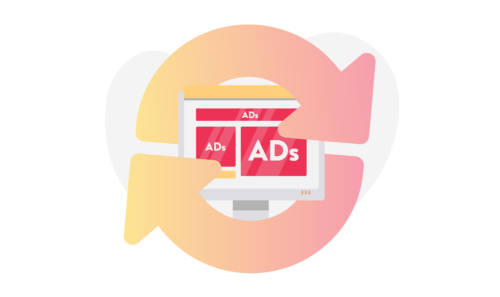UAM vs TAM – All You Need to Know
If you are interested in Header Bidding solutions, you are almost certainly aware of the increasing role and importance of Amazon Publisher Services. Here you can find the main differences between two of their products called Unified Ad Marketplace (UAM) and Transparent Ad Marketplace (TAM).
Header Bidding Methodologies
There are two methodologies to Header Bidding: Client-side Header Bidding and Server-side Header Bidding. In the first case, the auction takes place in a browser, whereas in the second, the auction is done on the server side. Amazon provides solutions for both products, as described below.
UAM for Small and Medium-sized Publishers

Unified Ad Marketplace is designed for web Publishers who directly or exclusively represent their site and use Google Ad Manager (formerly DoubleClick for Publishers or DFP) as their ad server. This is aimed at small and medium-sized Publishers already using prebid; or for those who don’t have any direct SSP relationships yet.
UAM is a place where we can find a demand aggregated from various SSPs and direct from Amazon. Among other Supply Side Platforms, you can find players like OpenX, Pubmatic, Xandr (formerly Appnexus), Magnite (formerly Rubicon Project), RhythmOne. UAM supports display ads across both desktop and mobile web. Video ads and native ads are not supported at the moment.
Ad Quality is assured by Publisher Blocking Tools, which allow blocking by advertiser domains, IAB categories, or specific creatives.
Amazon handles all supply partnerships on behalf of Publishers; and Publishers sign contracts only with Amazon. All bidders compete equally and transparently. UAM is free of charge for Publishers, but takes a cut of a sold ad impressions. Specifically, it charges a 10% transaction fee by deducting 10% from SSP bid prices prior to conducting a First Price auction. Earnings are sent in one payment in 60 days.
UAM Pros and Cons
The main advantages of adding Unified Ad Marketplace to the ad stack are as follows:
- Unique demand from Amazon;
- Access to buyers unreachable for small Publishers;
- Great potential for serving highly targeted ads leveraging first-party data that comes from Amazon e-commerce customers;
- Easy integration with Google Ad Manager – automated Line-Item configuration;
- Possibility to use UAM alongside other Header Bidding setup; it doesn’t disturb the work of the other, but UAM should not be nested in other Header Bidding solution;
- Unified Ad Market is a plug-and-play solution – Amazon gives a quite simple and fast way to test the product.
Possible downsides:
- Latency – although server-to-server Header Bidding auctions are faster than the client side, you should be aware that adding it to another server-side solution, like Google Open Bidding, may have an impact on latency;
- Lack of log-level data;
- Very basic reporting, UAM doesn’t offer API connection; you can explore data in the Amazon Publisher Services Platform or just download it.
TAM for Enterprise Publishers

Transparent Ad Marketplace is available on invitation only; and has been designed for Enterprise publishers. This solution is developed for Publishers with major exchanges. Using it requires knowledge to set up all details and make direct contracts with Supply Side Platforms and also with Amazon.
Each SSP pays the Publisher directly. Amazon pays the Publisher for Amazon demand.
TAM Benefits
Benefits of Transparent Ad Marketplace:
- Unique demand from Amazon;
- Great potential for serving highly targeted ads, due to First-Party data from Amazon e-commerce customers;
- Auction-level reporting to show the highest bid always wins;
- Full control of setup details;
- No fee for Publishers;
- Partners include: Xandr (AppNexus), Facebook Audience Network, OpenX, Magnite (RubiconProject), SpotX, and about 20 others;
- Possibility to turn bidders off and on in real time with a simple switch from the Amazon Publisher Services portal;
- Transparency in reports – record of each auction conducted for any time period, including bidders who bid for each impression, the bid CPMs and the winner.
Final Views
It is worth mentioning that UAM and TAM function in a similar way in the Amazon Publisher Services Platform. In most cases, Publishers cannot decide which solution they would like to use; and this is because it depends on the scale of their business, and not their preferences. Definitely, both solutions have a great potential to improve your overall revenue.
The best way to find out how these solutions may work with your environment is to try and test; and observe performance. The Yieldbird Team will always be happy to provide you with advice; and assist you in the evaluation of other solutions which you may be considering.







